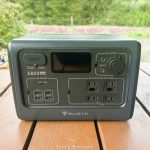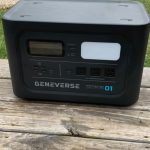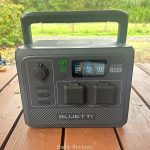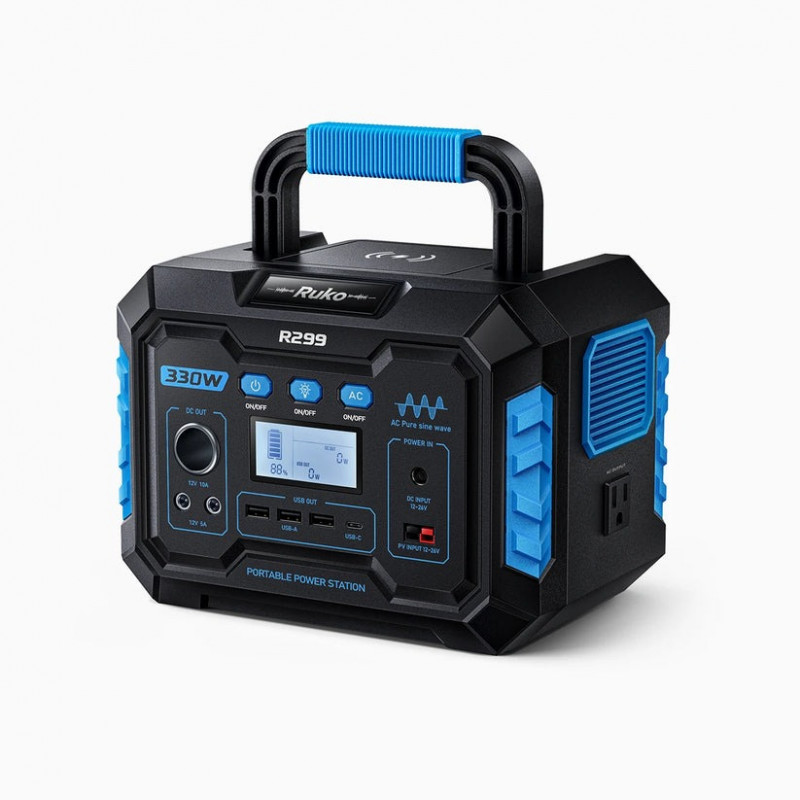This is a sponsored guest post. All opinions are my own.
While we are on the subject of picking out the right kind of generator for your home, the first obvious question to ask yourself is: What purpose would you want it to serve?
Are you living in a neighborhood where power outages are quite frequent? Or is it once or twice a year? Are you worried about those natural calamities and want a contingency plan?
I’ll go ahead and assume you are quite familiar with the pattern of the power outage in your neighborhood. Now, if you know that the power has a chance of going out for a relatively long period of time, the most important thing to worry about is how much power your generator can store.
If the pattern is on again-off again’ then you have to worry more about the circuit breaker panel.
Let’s get familiar with the different types of generators? The most common types are:
1. Standby
2. Inverter
3. Portable
Consulting with an electrician before investing in buying a generator would be wise. Even when you think you know what kind you need for your home/office, it would be better to talk to a professional before you actually buy one.
Below I will be talking about different types of generators. If you need more information, consider visiting https://www.ablesales.com.au/diesel-generators-perth-melbourne-brisbane/diesel-generator/
Home Standby Generators:
Just as they sound, these are installed permanently. In case of a power outage, they turn on automatically with the help of a transfer switch, which is pretty convenient.
The pros of this type is that they are extremely reliable for frequent power cuts. The con, I would say, is the noise. These can make a lot of noise while turning on and off, which is guaranteed to disrupt your sleep.
You can think about buying a newer model that has noise cancellation features, but those end up being quite expensive. These run on diesel and natural gases too. You should aim for one running on LPG as it is cleaner.
You can also get a converter if your options are limited. This one is perfect for a weak electric grid system and rolling blackouts.
Portable Generators:
These are the most convenient and can be used for multiple purposes due to their mobility. For any short-notice requirements, these are perfect, as they are easy to carry or wheel around.
These generators can be dual fueled for your convenience, and if you are thinking of storing propane, it is easier to store than any gases. You just need to get a fuel stabilizer, and you’re good to go.
These are relatively more affordable than the standby ones, and another great piece of news is that you don’t need someone to come in and install it for you! Portable generators are most handy for construction sites and if you are renovating parts of your home.
Install a wheel cart mechanism to carry it wherever you want. They usually weigh about 20 kg. Don’t forget to get one with both pull-start and electric mechanisms.
These can sometimes unexpectedly die, so you might need to do a pull-start. They are definitely not as expensive as a standby generator, and given the no-installation cost, this is what most people prefer. But one thing is that you need to connect it yourself to the appliances you need to function during a blackout, so make a list beforehand.
Inverter Generators:
These are mostly for outdoor activities. This is the handiest version of all the generators. If you’re into camping, RV-ing and other outdoorsy things, do invest in purchasing one.
These are lightweight machines and do not make any noise. They are also dual-fueled (propane and gas), so there’s no need to carry or store much fuel.’
There is an interesting feature which you can take advantage of; you can hook two of these generators up with a parallel connector, and they don’t even make any noise!
These are also quite inexpensive too; you can get one for as little as $300. But if you spend more, you get more wattage and more durability. These are cleaner and can be converted into standby or portables.
A few other things you must consider:
Besides getting a generator there are more than a few factors that you must remember, they are:
Costs of Running the Generator
As we have mentioned before, the cost of getting a generator comes in three stages: purchase, installation, and maintenance. The initial cost is the bulkiest of them all, and installation depends on what type of generator you
have.
If you want more wattage and want to power more machines, you need to spend more. A portable generator is easy; buy it and plug it in. For a standby generator, you also might have to get a storage container.
Maintenance costs also vary depending on what kind of generators you have. Running costs also depend on the kind of power you’ll be needing.
Frequency of Outage
Needless to say, if you have very frequent outages, you need a reliable generator.
If the blackout is:
● Very frequent, a standby generator is your friend.
● Occasional, a portable or an inverter is the way to go.
● Very rare, you can get either a portable or an inverter generator,
depending on how much you want to pay.
Find Out Your Wattage Requirement
Obvious, right? How do you know how powerful of a machine you need without figuring out exactly what your expectations are from it?
The first thing to do is to go around your home and list the things you want to be active during a power outage. Then add up the wattage supported by these appliances to find out the requirement.
It’s an easy task to figure out the wattage required by each electronic as it is inscribed somewhere. But with complicated electronics, like fridges and air conditioners, you need to consult an electrician as they use the power cycle.
But that’s not all; you need to multiply the entire wattage by 1.5, which would give you the final count. The reason is that to start heavy-wattage appliances, additional power is required beyond its normal energy use.
Run Time
This will tell you for how long you can expect service from your generator. It is expressed as half load (50% full) or quarter load (25% full). Both the measurements are with a full tank.
But for generators run on solar power, it isn’t quite the same. The energy is measured as WH or watts per hour. It’s quite simple; the longer the run time, the longer the generator would run.
A generator with a run time of 10 hours at full load can last for an entire night, but of course, it’d depend on how many appliances you are running. Running on solar power is another thing you need to think of.
You need enough sun hours for the generator to charge properly.
Final Thoughts
A generator is quite a big investment, ranging from $500 to $12k, with an average of $4k-5k. But it can end up saving you a lot of money because, during emergency power outages, homeowners face a lot of inconveniences,
like spoiled food and frozen pipes.
To save yourself from that unwanted situation and for your peace of mind, I would definitely say that buying a generator is worth the investment.


Hi there! I am Emily Evert, the owner of Emily Reviews. I am 28 and live in a small town in Michigan with my boyfriend Ryan and our two pugs. I have a large family and I adore my nieces and nephews. I love reading memoirs, and learning about child development and psychology. I love watching The Game of Thrones, Teen Mom, Sister Wives and Veep. I like listening to Jason Isbell, John Prine, and other alt-country or Americana music. I created Emily Reviews as a creative outlet to share my life and the products that I love with others.
This post currently has no responses.


















Leave a Reply